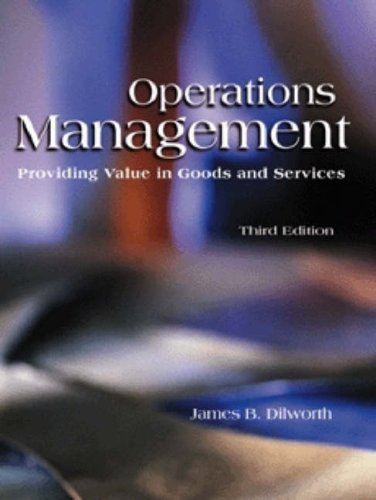A manufacturing company has a seasonal demand pattern, with the forecast demand for each month next year
Question:
A manufacturing company has a seasonal demand pattern, with the forecast demand for each month next year equal to 1,300, 1,000, 800, 700, 700, 700, 800, 900, 1,000, 1,200, 1,400, and 1,500 units, respectively. The company plans to end the current year with about 800 units in inventory. The company requires a minimum of 500 units in inventory for safety stock and work in process. It costs $1.10 per month to hold a unit in inventory.
The company will end the current year with 40 employees, and it costs $400 to hire and $600 to lay off an employee. It takes an employee 5 hours to make a product.
Employees are paid $9.00 an hour for regular-time work and $13.50 per hour for overtime work. For simplified planning, each month is considered to have 20 days. Employees can begin or end employment on any day of the month, so an employee can work fractions of a month.
(a) Compute the cost of a chase strategy, in which the number of employees is changed so the monthly production rate is made equal to the monthly demand rate.
Use the following method to find the approximate number of employees to be hired or laid off in each month: Find the unrounded employment level (to two decimal places) needed for each month by dividing the number of units to be produced that month by the number of units an employee can produce in a month. Determine the integer number of employees on the payroll at the end of each month, and find the difference between successive values to determine how many employees would be hired or laid off. Estimate the integer employment level at the end of the month as follows: When employment is decreasing, round the approximate employment level down to the next lower integer. Decreasing is when the unrounded employment level before a particular value (or before the series of equal values of which it is part) is higher than it and the value after it (or after the series of equal values of which it is part) is lower.
For increasing employment (the reverse case), round up. When the employment cycle is reversing at a peak or valley, round up if the decimal is greater than 0.50 and down if the decimal is less than 0.50. If one of these values has a decimal equal to 0.50, round down if it is at a peak and up if it is at a valley.
(b) Compute the cost of a pure inventory strategy, with the work force and production rate held constant at the average demand rate and the variation in demand rate accounted for by accumulating and depleting inventory. A part-time employee can be used to provide any fractional employment level to obtain the desired production rate.
Step by Step Answer:

Operations Management Providing Value In Goods And Services
ISBN: 9780030262074
3rd Edition
Authors: Dilworth, James B





